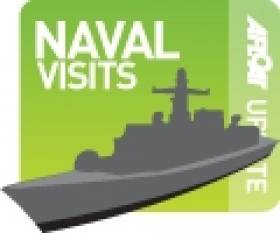Displaying items by tag: Russian Northern Fleet
Rare Russian Naval Call Due to Dublin Port
Admiral Chabaneko was built by Yantar Zavod in Kaliningrad, and her sister Admiral Basisty though she was cancelled and scrapped in 1994. In 1996 Admiral Chabaneko was transferred to the Russian Navy but was not commissioned until two years later. In 1999 she changed naval base from Baltysk to Severomorsk to take up service in the Northern Fleet.
The last such call by the Russian Navy to Dublin was by her half-sister, Severomorsk, one of over a dozen of the original Udaloy-I class destroyers built, which made a three-day visit to the capital in 2009.
Severomorsk had arrived from Cherbourg after completing in FRUKUS 2009, an international naval anti-piracy exercise in the North Atlantic. The five-day exercise was held off the Brest and included a Tourville class frigate from the French navy, the UK's HMS York and USS Klaking.





























































